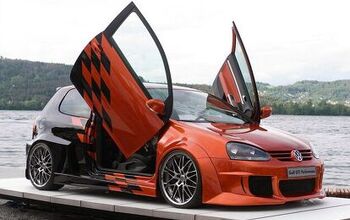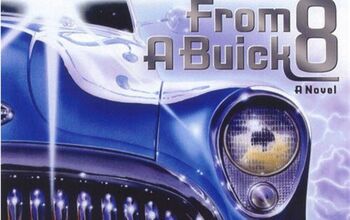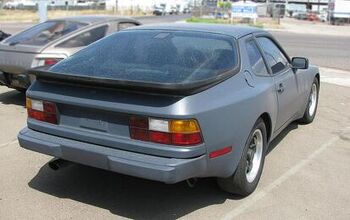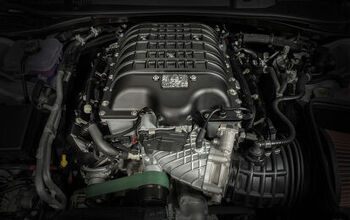Piston Slap: Transmission Talk, Debunked

Ernest writes:
Hi Sajeev, first of all I enjoy your column very much. The Honda transmission post over in the “New or Used” column raised my interest in something I’ve always been curious about. I have a few questions:
- I used to compensate for my lead foot by coasting down slight slopes or towards a red light in neutral (in my automatic.) I used to drive a manual and I understand it can be dangerous to coast down a steep slope because the differential becomes free and so the rear wheels can turn in opposite directions, potentially allowing for a spin.
- I stopped the practice in my automatic after learning (from a usenet board years ago) that the multi-plate clutch has very small clearances in N and consequently leads to overheating if allowed to coast. I’ve also heard that you don’t even want to idle at a standstill in N. Is this true? What the heck is N in an automatic intended for anyway, if you’re not supposed to use it?
- It was mentioned that you shouldn’t go into reverse without doing a complete stop. Same idea?
- Is it better to stress the engine at low rpm in overdrive, or to stress the transmission at high rpm in D4 (or D3 or whatever)?
Sajeev Answers:
Let’s get right to it.
1. I am not an expert in FWD transaxles, but putting a transmission in neutral has no effect on the differential, that’s downstream of the situation. More to the point, the (non limited-slip) differential only spins in different directions when airborne, it’s physically impossible to make one wheel spin the other way on the road, as it is loaded by the inertia provided by the car’s weight and forward momentum. Too bad it doesn’t work that way, though. Would make for a lot of fun on icy roads!
2. That’s all incorrect, unless the vehicle is flat-towed (all four wheels on the ground, like what you see with RV towing) and the engine is not running. Neutral is perfectly safe to run forever, because the running engine activates the transmission’s pump, circulating fluid to everything. Saw that for myself when adding fluid to the freshly-rebuilt gearbox in my daily driver two years ago.
3. Yes, but not for that reason. The load placed on clutches with the violent engagement between forward/reverse causes the problem, the clearances between neutral are irrelevant. Pop the car in neutral while slowing down for the gear change to smooth out and speed up this process. This is a great way to multitask!
4. It’s a difficult answer, mostly because the variables in one’s terrain, transmission shift logic (be it old-school mechanical or today’s electronic stuff) and the amount of cargo come into play. Your answer may be irrelevant to others. What’s the safe bet? Let your modern car do what the engineers intended, the stock transmission shift logic is normally “geared” (sorry) to improving durability. But if you live in Colorado and climb a hill at 1000 rpm in top gear, better override the system for your own sake.
Whew! Off to you, Best and Brightest.
Send your queries to mehta@ttac.com. Spare no details and ask for a speedy resolution if you’re in a hurry.

More by Sajeev Mehta
Latest Car Reviews
Read moreLatest Product Reviews
Read moreRecent Comments
- 28-Cars-Later I'm getting a Knight Rider vibe... or is it more Knightboat?
- 28-Cars-Later "the person would likely be involved in taking the Corvette to the next level with full electrification."Chevrolet sold 37,224 C8s in 2023 starting at $65,895 in North America (no word on other regions) while Porsche sold 40,629 Taycans worldwide starting at $99,400. I imagine per unit Porsche/VAG profit at $100K+ but was far as R&D payback and other sunk costs I cannot say. I remember reading the new C8 platform was designed for hybrids (or something to that effect) so I expect Chevrolet to experiment with different model types but I don't expect Corvette to become the Taycan. If that is the expectation, I think it will ride off into the sunset because GM is that incompetent/impotent. Additional: In ten years outside of wrecks I expect a majority of C8s to still be running and economically roadworthy, I do not expect that of Taycans.
- Tassos Jong-iL Not all martyrs see divinity, but at least you tried.
- ChristianWimmer My girlfriend has a BMW i3S. She has no garage. Her car parks on the street in front of her apartment throughout the year. The closest charging station in her neighborhood is about 1 kilometer away. She has no EV-charging at work.When her charge is low and she’s on the way home, she will visit that closest 1 km away charger (which can charge two cars) , park her car there (if it’s not occupied) and then she has two hours time to charge her car before she is by law required to move. After hooking up her car to the charger, she has to walk that 1 km home and go back in 2 hours. It’s not practical for sure and she does find it annoying.Her daily trip to work is about 8 km. The 225 km range of her BMW i3S will last her for a week or two and that’s fine for her. I would never be able to handle this “stress”. I prefer pulling up to a gas station, spend barely 2 minutes filling up my small 53 liter fuel tank, pay for the gas and then manage almost 720 km range in my 25-35% thermal efficient internal combustion engine vehicle.
- Tassos Jong-iL Here in North Korea we are lucky to have any tires.


































Comments
Join the conversation
I do not know how to drive an automatic. That is why I drive a manual. No mention of double clutching, heel and toe? Has everyone forgot how to drive a manual.
John, you are correct regarding the lockup converter/less heat issue. However when an automatic shifts between gears, up or down, it also builds up heat due to the slippage that takes place during the shifts. And shifting between neutral and drive in an automatic causes wear due to the engagement and disengagement of the clutches, so people that coast downhill in neautral with an automatic better be saving up for a rebuild.